Morocco is a country known for its rich cultural heritage. Traditional music and dance styles have been passed down through generations, each with its own unique rhythm and flavor. From the energetic Ahidous to the Ghiata, from the Ahwach to the Guedra, the traditional dances and music of Morocco offer a fascinating insight into the culture of this vibrant nation. The ancient Mulhun style of singing as well as modern Chaabi music and dance moves have also become popular among Moroccans in recent years. Other popular musical forms include Ouais, and Reggada, which are becoming increasingly popular worldwide. These traditional Moroccan dances and music styles offer an amazing opportunity to learn about Morocco’s culture and history while having fun at the same time.
Dancing has always been important in Moroccan culture; it brings people together regardless of age or social class. It is also used for various celebrations such as weddings or religious holidays like Ramadan or Eid al-Fitr. For many Moroccans, dancing is more than just entertainment; it’s a way of expressing emotion, connecting with family members and friends, and bringing joy into everyday life. Not only does it provide physical exercise but also mental stimulation that can lead to creative expressions such as storytelling or poetry reciting – all while keeping one foot firmly rooted in tradition! With so much diversity on display in the traditional dances and music of Morocco, there is sure to be something for everyone to enjoy!
1. Ahidous Dance And Music
Ahidous is an ancient Amazigh dance and music that is performed in a line or circle by both men and women, capturing the spirit of Morocco’s rich cultural heritage. It originated in the Middle Atlas mountains and Jbel Saghro, with different clothing worn by men and women to symbolize their connection to each other. Men wear white jallaba with hoods and turbans tied on their heads, while women dress in traditional attire adorned with jewelry. The Agnza/Tallount drumming instrument is held by the men as they sing poems which are repeated by the women. The lyrics are often about love, hope, bridegroom, wishes, and more; creating an exciting atmosphere that celebrates life’s joys. With its vibrant energy and mesmerizing beats, Ahidous continues to be a popular form of entertainment at Moroccan weddings today. Transitioning into Ghiata Dance And Music, this traditional folkloric performance uses large drums known as Tabals alongside cymbals called Zerbis for accompaniment.
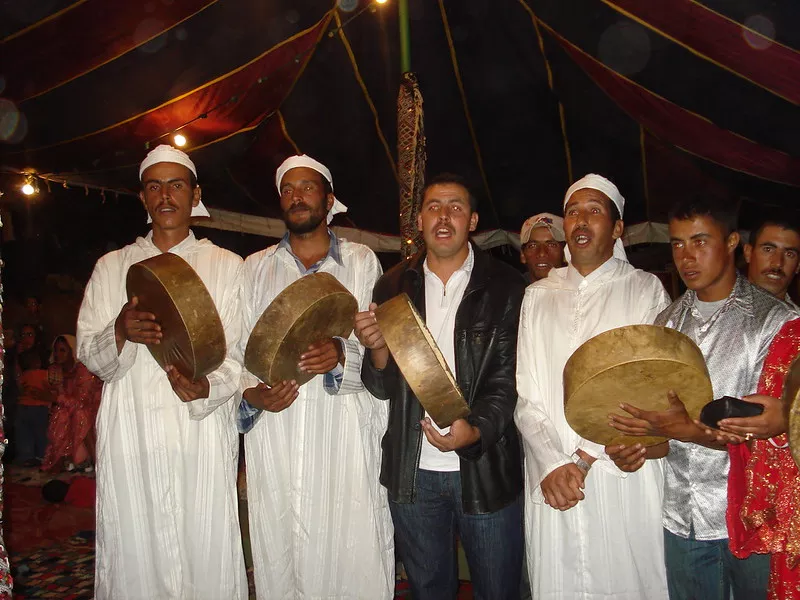
2. Ghiata Dance And Music
The Ghiata Dance is a spectacular display of strength and power, as the dancers move in unison while holding their rifles aloft. Accompanied by only a simple reed flute, the men shout rhythmically and stomp their feet, adding to the intensity of the performance. The choreography includes war-like moves such as pretend shooting which demonstrate bravery and courage for those going off to battle. This traditional dance has been kept alive over time, with its climax involving all dancers shooting blanks from their rifles at the ground simultaneously. This dramatic finale serves as a reminder of how deeply rooted this tradition is in Moroccan culture. Moving on from this powerful display of tradition, we now turn our attention to another popular dance form – Ahwach Dance and Music.
3. Ahwach Dance And Music
Ahwach is a vibrant expression of the Amazigh culture, conveying both joy and strength as people move in unison to the sounds of drums and reed flutes. It is customary in Morocco for weddings to feature Ahwach as the main event, with everyone eagerly awaiting their turn to join in on the festivities. This traditional dance celebrates community spirit while also embracing individual expression which can be seen through its:
- Unique combination of percussive music and chanting
- Colorful costumes that are incorporated into the movement
- Joyous energy that radiates from both men and women alike.
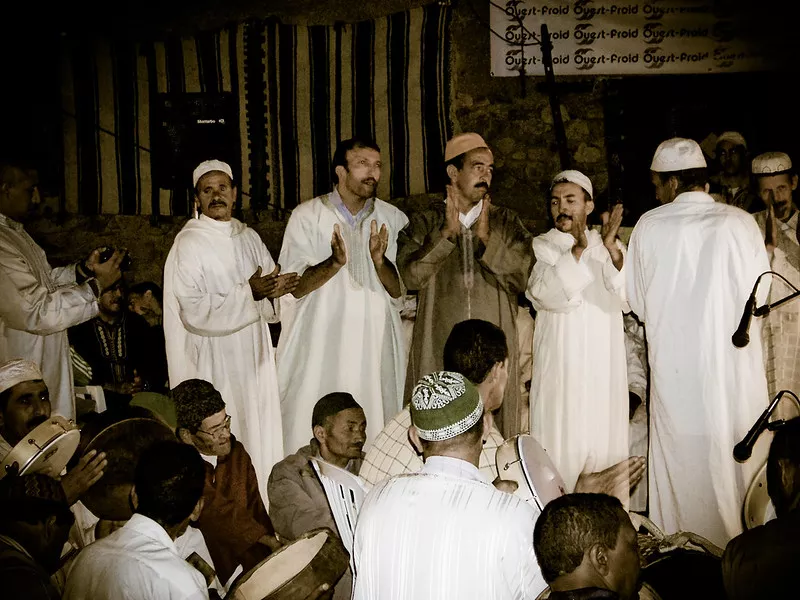
The impact of Ahwach on Moroccan culture has grown significantly over the past decade, appearing at many festivals around the country. Its captivating expressions have been an inspiration to all who witness it, leaving audiences feeling a sense of liberation that transcends any language barrier. As this art form continues to evolve and reach wider audiences, it serves as a reminder of how powerful tradition can be when embraced with open arms. From its roots deep in the Atlas mountains to its modern-day iterations, Ahwach will continue to bring joy and freedom for generations to come. With this knowledge in mind, we now turn our attention to Guedra Dance and Music.
4. Guedra Dance And Music
Guedra is a captivating form of artistry that showcases the vibrant culture of the Tuareg Berber people through its elaborate costumes, intricate movements, and celebratory energy. The dance begins with a group of women kneeling in a circle and singing and clapping together. One woman then steps into the center to perform her solo as she slowly unveils a veil covering her body. As she moves her hands and shoulders gracefully, most of her performance is done while kneeling before she removes the veil completely and collapses on her back in dramatic fashion. This traditional dance is an example of how music can be used to express emotion and bring joy to all who experience it. By connecting cultures through its unique style, Guedra pays homage to Morocco’s rich heritage while providing an opportunity for freedom-seeking audiences to revel in its beauty. The next subtopic explores another traditional Moroccan dance form – Gnaoua – which shares some similarities with Guedra but has distinct characteristics that make it stand out from other dances.
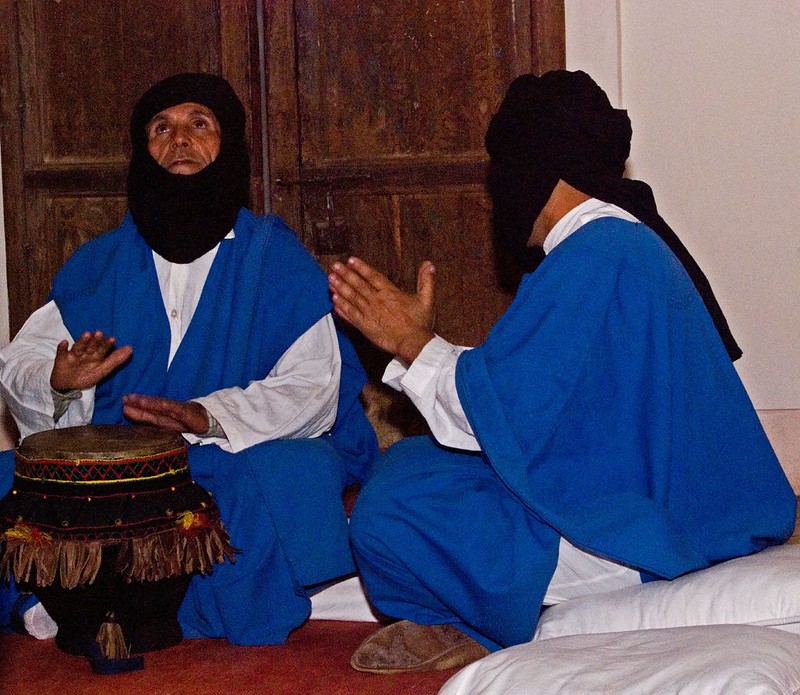
5. Gnaoua Dance And Music
Gnaoua or Gnawa, a captivating form of artistry, showcases the Tuareg Berber culture through its energetic movements and intricate costumes, symbolizing an emotional freedom that resonates with audiences. The traditional music and dance combine to create an atmosphere of trance-like hypnotic rhythms that draw from sub-Saharan roots. The performance is characterized by percussive beats on drums and metal castanets called “Qraqab”, with accompanying acrobatic jumps and other movements. This unique combination of musical instruments creates a distinct sound that has become synonymous with Gnaoua music. Through this vibrant art form, viewers are provided a glimpse into the history and cultural values of Morocco while being able to experience moments of joyous expression in harmony with nature. As the beats continue to echo in the night sky, one can’t help but be mesmerized by the power of this ancient tradition as it still brings people together today. Transcending time and space, Gnaoua provides an opportunity for those who take part in it to revel in its beauty for generations to come. With this thought in mind, let us now turn our attention to ‘Taskiwin dance and music’.
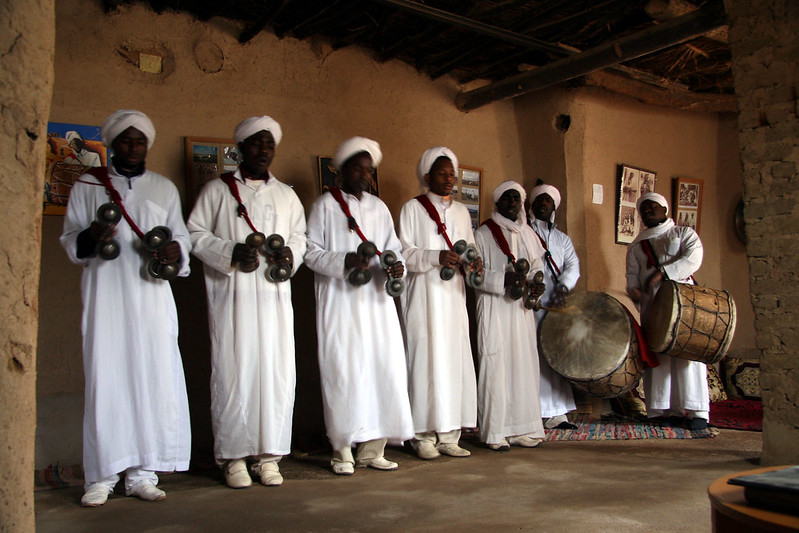
6. Taskiwin Dance And Music
Taskiwin, an ancient martial dance originating from the western High Atlas mountain range of Morocco, is a captivating form of artistry that symbolizes emotional freedom. This tradition has been recognized by UNESCO as an Intangible Cultural Heritage and is still practiced in select mountain towns and villages. The dancers carry a horn called Tiskt which they shake to the rhythm of flutes and tambourines. Historically, this practice was a key means of socialization for young men and women, however, it now faces the threat of extinction due to its dwindling popularity amongst younger generations as a result of globalization. Despite this decline, some communities are still striving to keep this dance alive through informal learning methods and preserving the craftsmanship related to making musical instruments that accompany it.
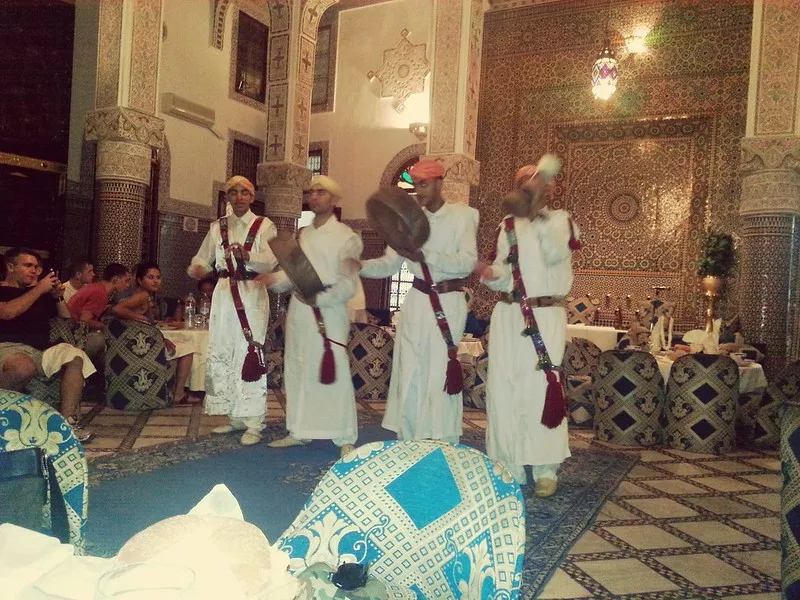
7. Rokba Dance And Music
Rokba is an ancient Saharan folklore dance that has been preserved in select villages of Morocco for hundreds of years, with a majority of participants being aged between 20 and 40. This traditional performance involves the use of drums, hand-clapping, and singing by both men and women simultaneously. Songs are typically led by one leader who stands in front of the band while all other members follow along with his movements. This form of music is still popularly performed during special events such as large weddings or Music festivals in Morocco. It was once a very popular entertainment during wartime when Draa Valley was a tribunal society and continues to be seen at gatherings today. The energy that radiates from this captivating dance brings joy to those who witness it, inspiring feelings of freedom and happiness in its audience. Now we turn our attention to Shikhat Dance and Music, another well-known Moroccan folkloric tradition.
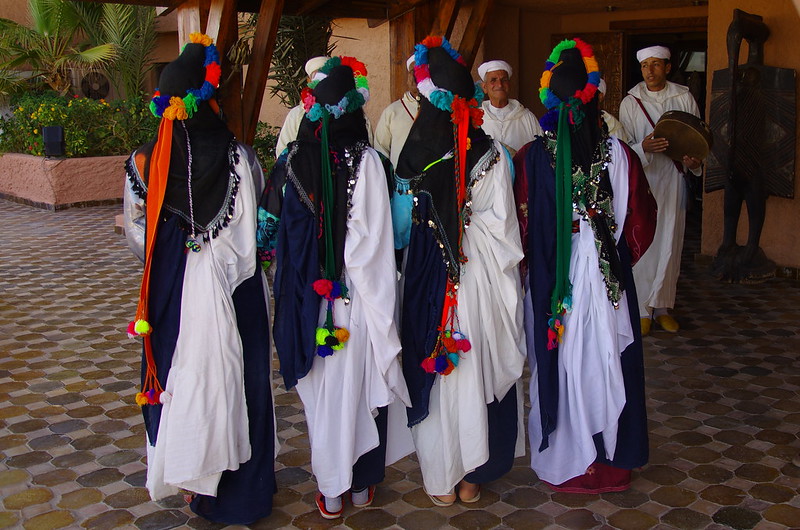
8. Shikhat Dance And Music
Shikhat is an enchanting cultural expression that captivates its viewers with its rhythmic melodies and joyous energy. This traditional dance, originating in Morocco, has been passed down through generations of women who use it to express themselves and their culture. It is often performed at private events such as weddings and circumcisions, making it difficult for tourists to experience the beauty of the dance first-hand without an invitation.
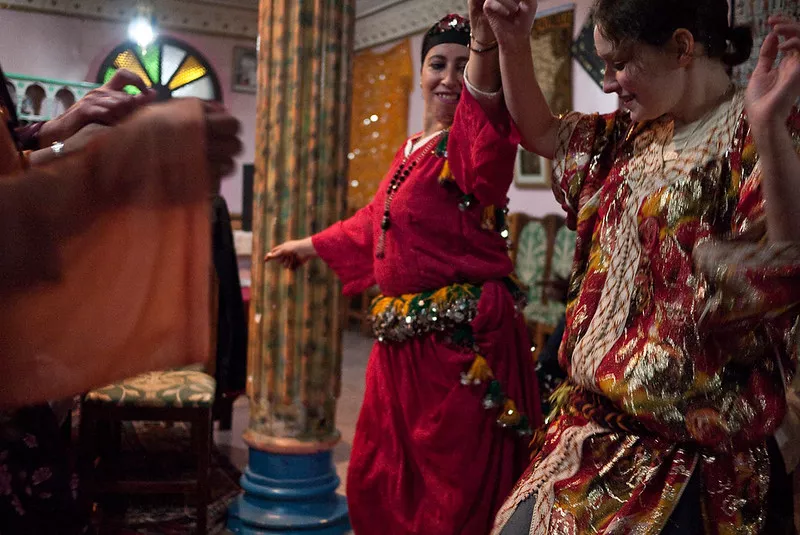
The music accompanying Shikhat is based on Shaabi music or Atlas music, which includes drums, violins, and Lotar instruments. The combination creates a unique soundscape that adds to the alluring atmosphere created by these performances. As with other Moroccan dances and music forms like Rokba, Shikhat is part of the region’s intangible heritage that must be preserved if it is not to be lost forever.
9. Houara Dance And Music
The Houara dance of Inezgane is a culturally distinct mixed-gender folk practice, featuring intricate choreography and a distinctive musical accompaniment. The tightly packed circle of men and the lone woman who enters to end the performance are all integral components of this traditional dance which has spiritual roots in Berber tribes. The music that accompanies the Houara is equally as important as it sets the tone for the choreographed movements within the circle. This unique combination is something that is only found in Morocco and serves as an example of how music and dance can be intertwined to create a powerful atmosphere. As we explore further into Moroccan culture, we encounter another type of traditional dance known as Boughanim.
10. Boughanim Dance And Music
Transitioning from Houara Dance and Music to Boughanim Dance and Music, one can find that Boghanim is an ancient Berber music form in Morocco, found primarily in the Ait Bougmmez Valley and its surrounding areas. It has been a source of joy for many generations at weddings and other celebratory events:
- Instrumentation: Boghanim uses traditional instruments such as drums & flutes, which are played by skilled musicians who often have many years of experience.
- Drums: The drummers use different rhythms and sounds to create an upbeat atmosphere that encourages people to dance.
- Flute: The person playing the flute is known as Talount; they play along with the drummers while creating their own unique sound.
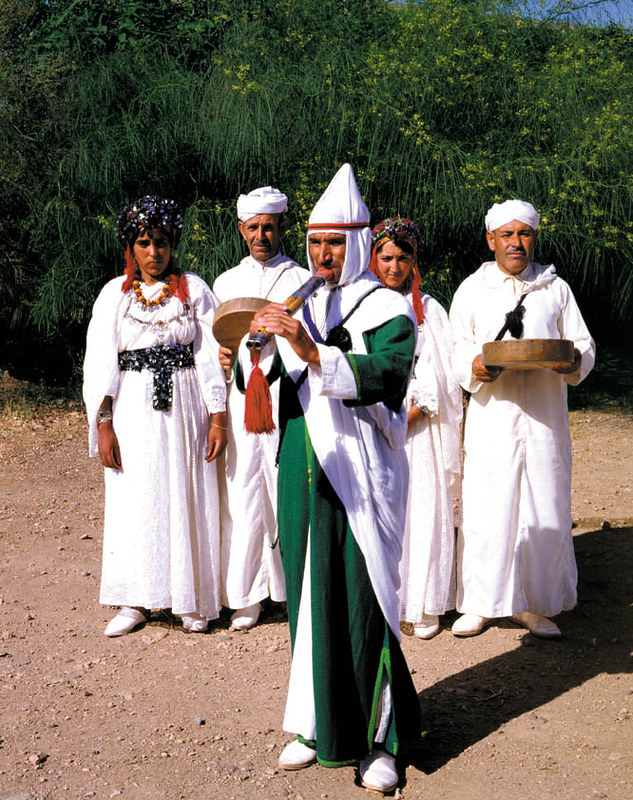
Boghanim is quickly becoming endangered due to a lack of practice or teaching among new generations; however, this does not diminish its value as a cultural treasure within Moroccan culture. This leads us to our next topic Sufi music, which carries on this same spirit of celebration through its own unique style.
11. Sufi Music
Sufi music is a form of spiritual and therapeutic expression, that has been honed over centuries through carefully crafted melodies, rhythms, and instruments. The practice is rooted in Islamic mysticism and draws on the idea that one can connect with the divine through music. At Sufi gatherings or ceremonies, participants often use chanting and dancing to express their faith in an energetic and meaningful way. The main instrument used during Sufi ceremonies is usually the flute-like ney, but drums, string instruments, horns, and other percussion are also employed to create a meditative environment for participants.
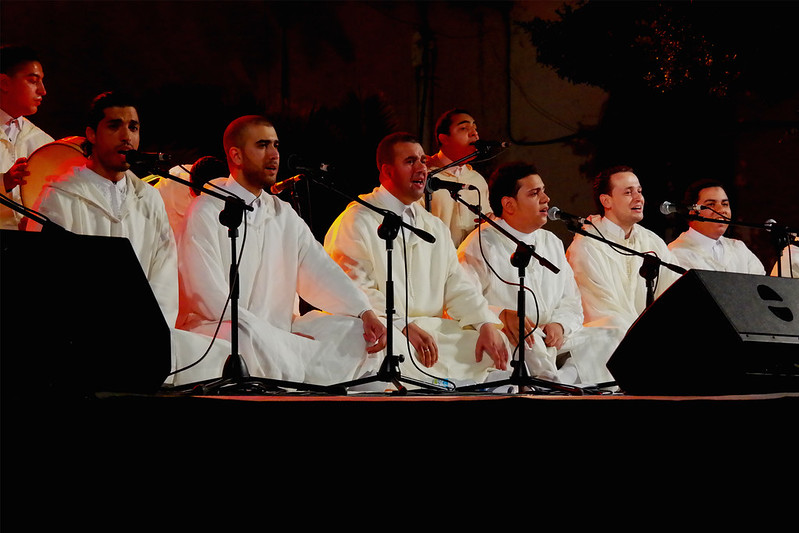
This musical experience allows followers to reach a higher realm of understanding while clearing away anxieties or troubles that may have been plaguing them previously. As such, Sufi music serves as a source of healing for both body and soul. Transitioning now to Mulhun music – another form of traditional Moroccan dance – it combines elements from traditional folk dances with modern influences from pop culture.
12. Mulhun Music
Mulhun music is an amalgamation of various genres, blending elements of traditional folk music with contemporary influences from popular culture. This musical style has a strong presence in Morocco and is characterized by its rhythmic melodies and vibrant rhythms. It is typically performed on instruments such as the oud, qanun, tambourine, and castanets. The sound created by these instruments creates a lively atmosphere that can be enjoyed both actively and passively.
The skillful manipulation of these instruments creates an emotional response from the audience that ranges from joy to contemplation. As one listens to Mulhun music their soul is filled with:
- A sense of freedom
- An appreciation for the beauty of Moroccan culture
- A celebration of traditional values
- An optimistic outlook on life.
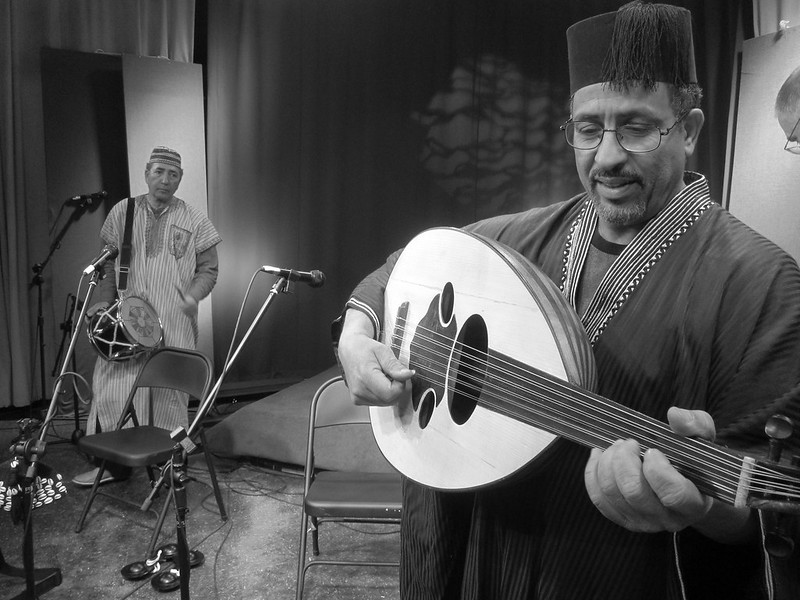
By drawing upon this unique combination of sounds and emotions, Mulhun music invites listeners to explore the depths of their own spirit while also providing them with an enjoyable experience.
13. Chaabi Music And Dance
Moving on from Mulhun, Chaabi Music And Dance is another popular genre of traditional Moroccan music. This upbeat form of music has its origins in the streets and souks but can now be heard at festivals, weddings, cafes, and other events. It is a fusion of Arab, African, and modern Western influences such as Berber music, Milhun tunes, Gnaoua rhythms, pop music, and reggae. The lyrics in Chaabi typically deal with love and social issues which have been known to get their authors in trouble with government authorities.
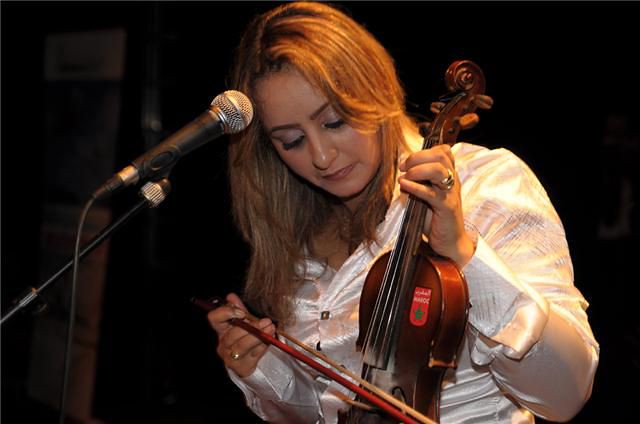
The impact that Chaabi has had on Moroccan culture is immense. After decades of being subservient to Egyptian, Lebanese, and Syrian musical styles it served as an awakening for Morocco who discovered that they had their own vibrant indigenous musical culture – one that was just as exciting as those from the Middle East. In addition to this, it also helped propel Algerian Raï into the spotlight after the World Music explosion of the 80s when musicians started fusing together elements from both genres.
14. Ouais Dance And Music
The Ouais Dance is a graceful, fluid performance combining English ballet and classical Arabic music that is often seen at weddings. The dancers typically dress in elaborately embroidered kaftans with silk belts and wear copper cymbals on their fingers. Accompanying the dance are a one-stringed fiddle, two or three small mandolins, and a single musician pounding on a large cast iron piece providing an underlying rhythm. This traditional dance form is both captivating and mesmerizing to witness as it captures the beauty of Moroccan culture.
15. Reggada Dance And Music
Reggada is a Moroccan dance and Music to show victory over an enemy or opponent. The dancers are led by a leader that they call “Sheihk” who plays music with Moroccan and other traditional North African instruments while the rest of the dancers move their shoulders and hit the ground with a stick to the beat of the drums.
The Zmmar is a flute made from horns that can only be found in Africa. The Rhaita or Ghaita is similar to [Scottish] bagpipes, and the Bendri or Bendir is a drum. People think that the Bendri/Bendir comes from Mesopotamia, which is now Iraq.
Conclusion
Morocco has a rich cultural heritage that is reflected in its traditional dances and music. From the Ahidous to the Ouais, there is a wide variety of styles, which have remained popular for centuries. It is estimated that 200 million people around the world practice traditional Moroccan dance and music. This statistic highlights just how renowned these traditions are in modern society. The unique rhythms and movements create an atmosphere of celebration and joy, making them popular at both formal events and informal gatherings alike. Traditional dances and music from Morocco form an integral part of its culture, providing an important source of identity for its citizens.

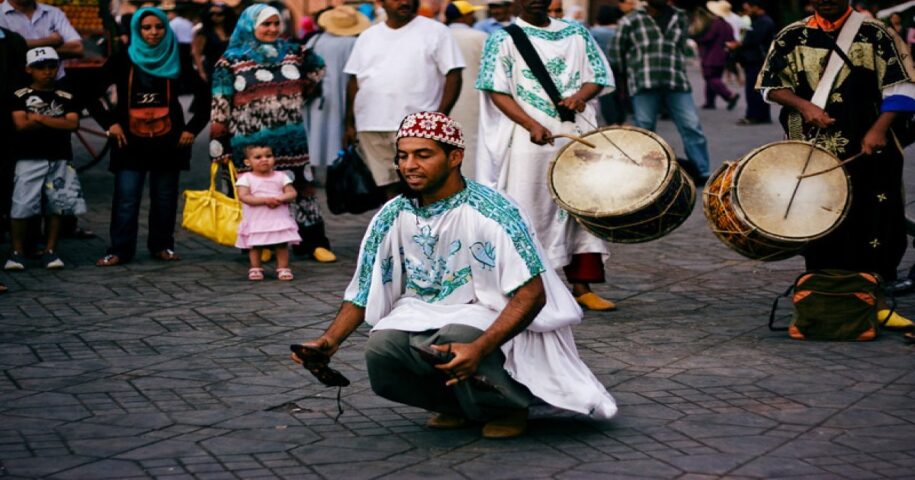
Leave a Reply